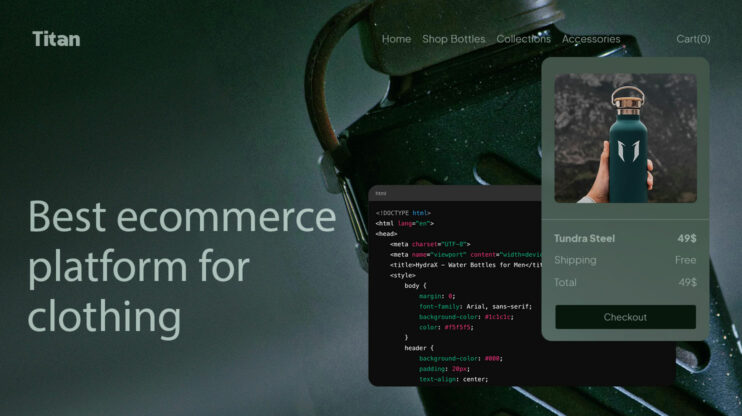Furniture stores need a good way to keep track of all their items. From sofas and dining sets to mattresses and decor, there’s a lot to manage. That’s where furniture inventory management software comes in handy.
Furniture inventory management software helps stores stay organized and run smoothly. It tracks what’s in stock, what’s been sold, and what needs to be ordered. This type of software is made just for furniture businesses. It handles the unique needs of selling big, often customizable items.
In this article, we’ll cover how furniture inventory management software helps retailers streamline stock control and improve efficiency. We’ll explore key features like real-time tracking, integration, and automated ordering. We’ll also highlight the benefits and review top software options for furniture businesses.

Create your online store in minutes!
Looking to sell online? Develop and launch your store with 10Web AI Ecommerce Website Builder.
FAQ
Is there a free option for inventory management? What are the top software options available? How can I get support for my software? What systems are best for furniture retail? Can I find a template for inventory management? Where can I access training for the software? Is there a mobile app for inventory tracking? What features should a POS system have? What type of inventory system suits furniture dealers? What is the average cost of inventory software?
Key features of furniture inventory management software
Furniture inventory management software offers tools to streamline operations and boost efficiency. These systems help retailers track stock, integrate with other business systems, and automate ordering processes.
Real-time inventory tracking
Real-time inventory tracking lets you see exactly what’s in stock at any moment. This feature updates automatically when items are sold or received. You can check stock levels across multiple stores or warehouses from one screen.
The software often includes barcode scanning to speed up inventory counts. You can use a mobile device to scan items and update quantities quickly. Some systems also use RFID tags for hands-free tracking of furniture pieces as they move through your warehouse.
Real-time tracking helps prevent overselling. When an item sells online or in-store, the system updates right away. This stops you from promising items you don’t have.
Integration capabilities
Integration capabilities connect your inventory system with other business tools. This creates a smooth flow of data across your company.
You can link your inventory software to your point-of-sale system. When a sale happens, stock levels update automatically. No need for manual entry.
Ecommerce integration syncs your online store with physical inventory. Customers see accurate stock info when shopping on your website.
Accounting integration saves time on bookkeeping. Sales and inventory changes flow into your accounting software without extra steps.
Some systems connect with shipping carriers. This helps you manage deliveries and track packages easily.
Automated ordering and restocking
Automated ordering and restocking features help keep your inventory at the right levels. The software tracks sales trends and stock levels to suggest reorder points.
You can set up automatic purchase orders when stock gets low. This ensures you don’t run out of popular items. The system can also flag slow-moving products so you can adjust your ordering.
Many tools offer demand forecasting. They look at past sales data to predict future needs. This helps you stock up for busy seasons without overstocking.
Vendor management features store supplier info and pricing. You can compare vendors and automate order placement to get the best deals.
Benefits of using furniture inventory management software
Furniture inventory management software offers several advantages for retailers. It helps streamline operations, cut down on mistakes, and keep customers happy.
Enhanced efficiency
Furniture inventory software speeds up many tasks for store owners. You can check stock levels quickly without counting items by hand. The system updates automatically when you make sales or receive new shipments.
You can set up alerts to reorder popular items before they run out. This keeps your shelves stocked without overfilling your warehouse. The software also helps you track which pieces sell best and when. You can use this info to plan future orders and sales.
Some programs let you manage custom orders too. You can keep tabs on special fabrics, finishes, and delivery dates all in one place. This saves time compared to using separate spreadsheets or paper forms.
Error reduction
Manual inventory tracking often leads to mistakes. Furniture inventory software cuts down on human error. You won’t accidentally sell the same sofa twice or forget to order more dining chairs.
The software can sync with your point-of-sale system. This means sales get logged right away, keeping your stock count accurate. You can also use barcode scanners to update inventory fast and without typos.
For custom orders, the software helps prevent mix-ups. It can store all the details about each unique piece, from dimensions to fabric choices. This makes it easier to build and deliver exactly what the customer wants.
Improved customer satisfaction
With better inventory control, you can serve your customers better. You’ll know right away if an item is in stock or how long it will take to get more. This helps you give quick, accurate answers to shoppers.
The software can also help you offer better delivery estimates. You can see which items are ready to ship and which need to be ordered. Some systems even let customers track their orders online.
For custom furniture, you can keep buyers updated on each stage of their order. This transparency builds trust and excitement. It also cuts down on calls asking about order status, freeing up your staff for other tasks.

Create your online store in minutes!
Looking to sell online? Develop and launch your store with 10Web AI Ecommerce Website Builder.
9 top furniture inventory management software
This section covers a detailed review of nine top furniture inventory management software solutions, each designed to help businesses streamline stock control and improve operational efficiency.
1. NetSuite
NetSuite offers a powerful inventory management solution for furniture businesses. You can track stock across multiple locations and sales channels in real-time. This helps you keep the right amount of inventory on hand.
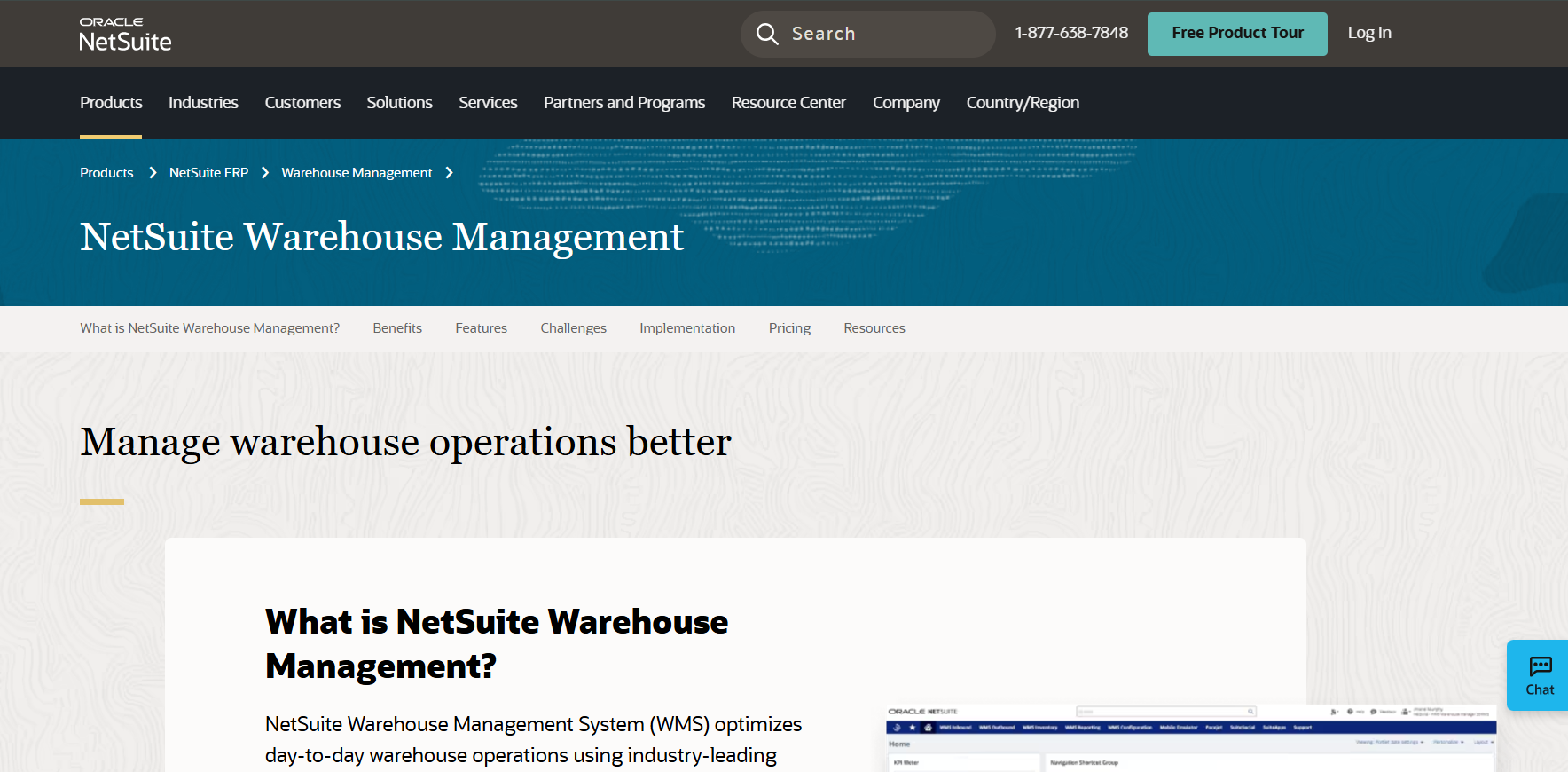
The software lets you automate inventory tracking using lot and serial tracing. You can easily see what’s in stock, what’s on order, and what’s been sold. This helps you avoid running out of popular items or overstocking slow movers.
NetSuite is designed for furniture retailers, manufacturers, and distributors. It works well for small shops up to large enterprises. The cloud-based system grows with your business as you add more users or locations.
Key features include warehouse management, supply chain planning, and procurement tools. You can manage your entire furniture business in one system instead of using separate programs.
| Pros | Cons |
| Real-time inventory visibility | Can be complex for small businesses |
| Automates tracking across locations | Higher cost than some basic options |
| Integrates with other business functions | May require staff training |
2. Odoo Inventory
Odoo Inventory is a software tool that helps furniture businesses manage their stock. It’s part of the larger Odoo suite of business apps.
With Odoo Inventory, you can track your materials and finished products in real-time. This means you always know what you have on hand.
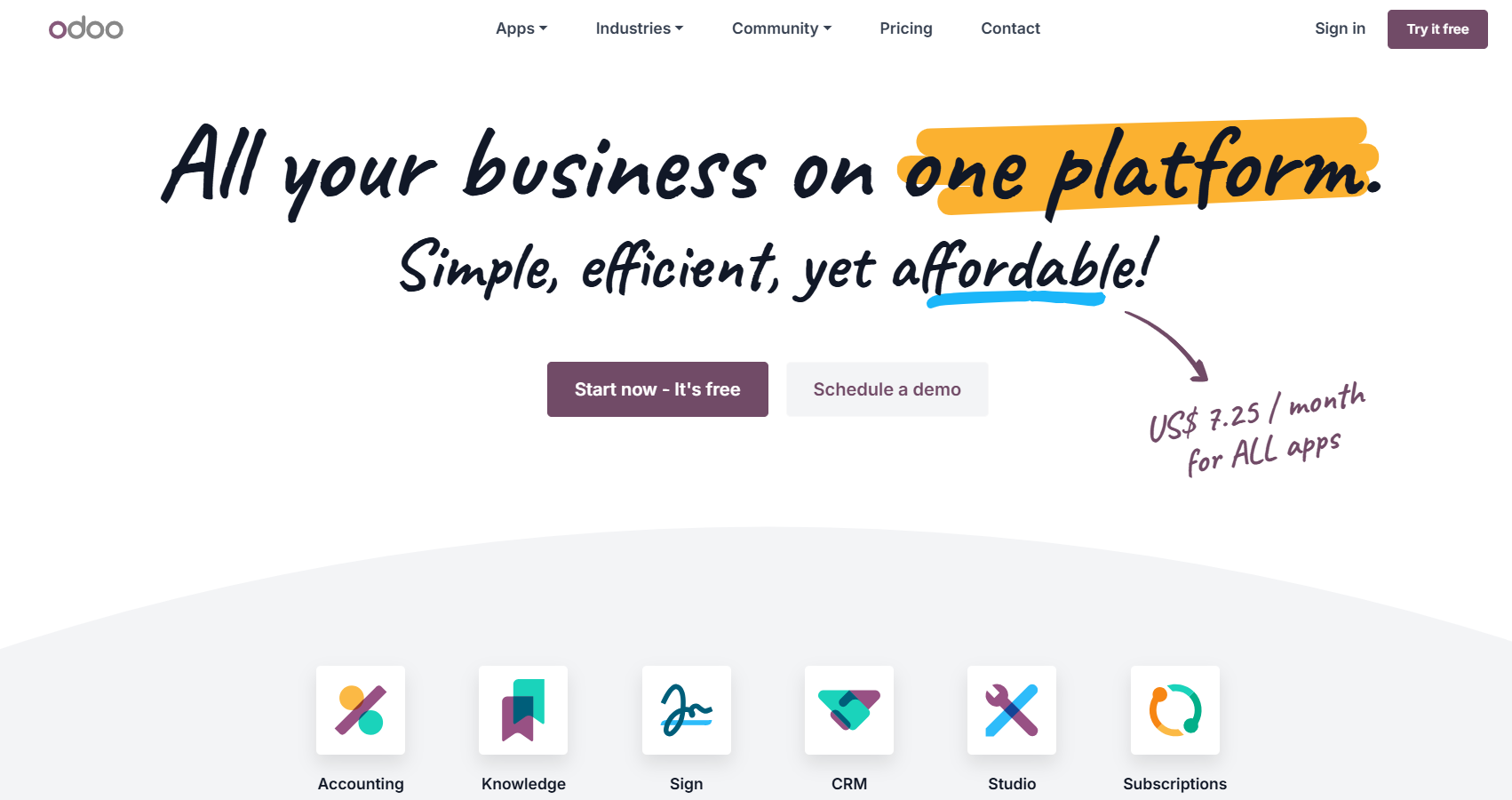
The software lets you use barcodes to quickly update inventory levels. It can also create purchase orders when supplies run low.
Odoo Inventory works well for small and medium-sized furniture makers. It’s also used by larger manufacturers who need to track many items.
The tool is good for businesses that want an all-in-one solution. It connects with other Odoo apps for sales, accounting, and more.
| Pros | Cons |
| Real-time tracking | Might be complex for very small businesses |
| Automatic purchase orders | Requires setup time |
| Integrates with other Odoo apps | May need staff training |
3. Zoho Inventory
Zoho Inventory is a popular software for managing furniture inventory. It helps you keep track of your stock and streamline your operations. The tool is designed for small and growing businesses in the furniture industry.
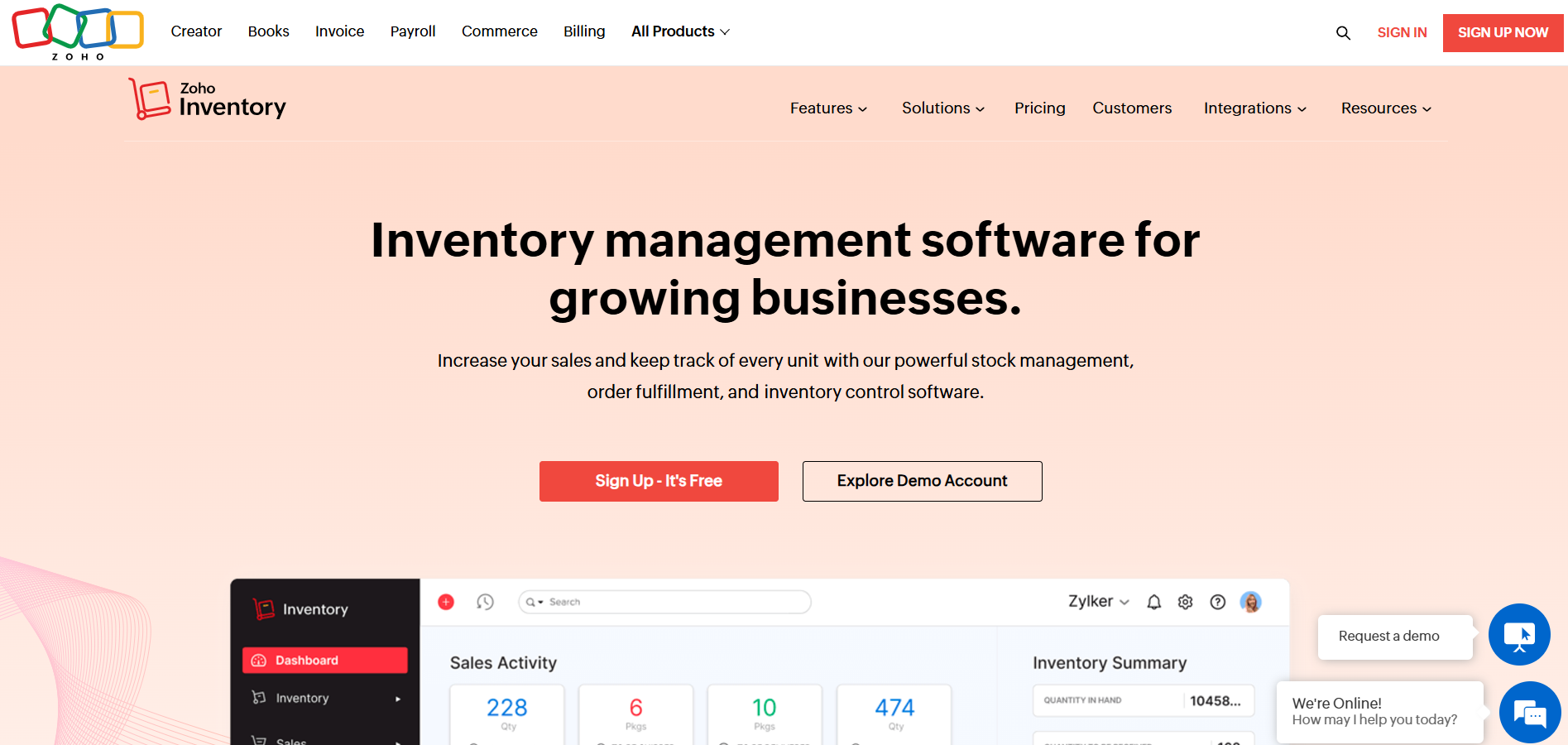
With Zoho Inventory, you can easily monitor your furniture stock levels. You’ll know when it’s time to reorder items, which helps prevent stockouts. The software also lets you create and manage purchase orders for new furniture.
Zoho Inventory integrates with other Zoho apps like Zoho Books and Zoho Analytics. This makes it easier to handle accounting and get insights about your furniture business. You can also use it with online marketplaces to sell your furniture.
| Pros | Cons |
| Easy to use interface | Some advanced features may require higher-tier plans |
| Integrates with other Zoho apps | May have a learning curve for new users |
| Suitable for small to medium businesses | Limited customization options in lower-tier plans |
4. Fishbowl
Fishbowl is a popular choice for furniture inventory management. You can use it to track stock levels and process orders efficiently. The software integrates with QuickBooks and other accounting systems.
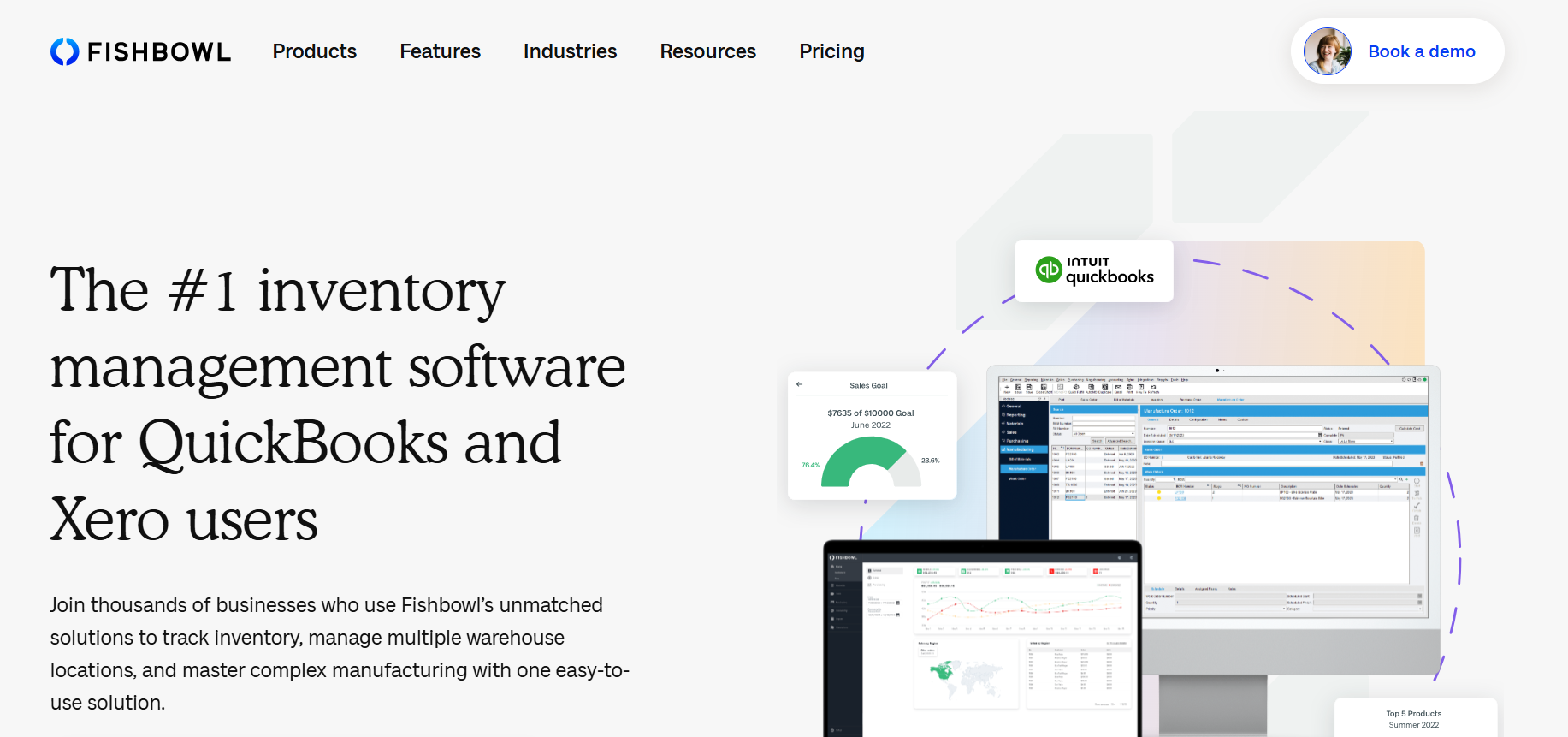
Fishbowl offers features tailored to furniture businesses. You can manage multiple warehouses and track items by size, color, or style. It also helps with order fulfillment and shipping.
Small to medium-sized furniture retailers and manufacturers often use Fishbowl. It’s suited for businesses that need more than basic inventory tracking.
| Pros | Cons |
| QuickBooks integration | Can be complex for very small businesses |
| Multi-warehouse management | Might require staff training |
| Order tracking features | Higher cost compared to basic solutions |
5. QuickBooks Commerce
QuickBooks Commerce is a software tool that helps you manage your furniture inventory. It lets you track stock levels and get alerts when items are running low. You can see your sales and inventory info in real-time, which helps you make smart choices for your business.
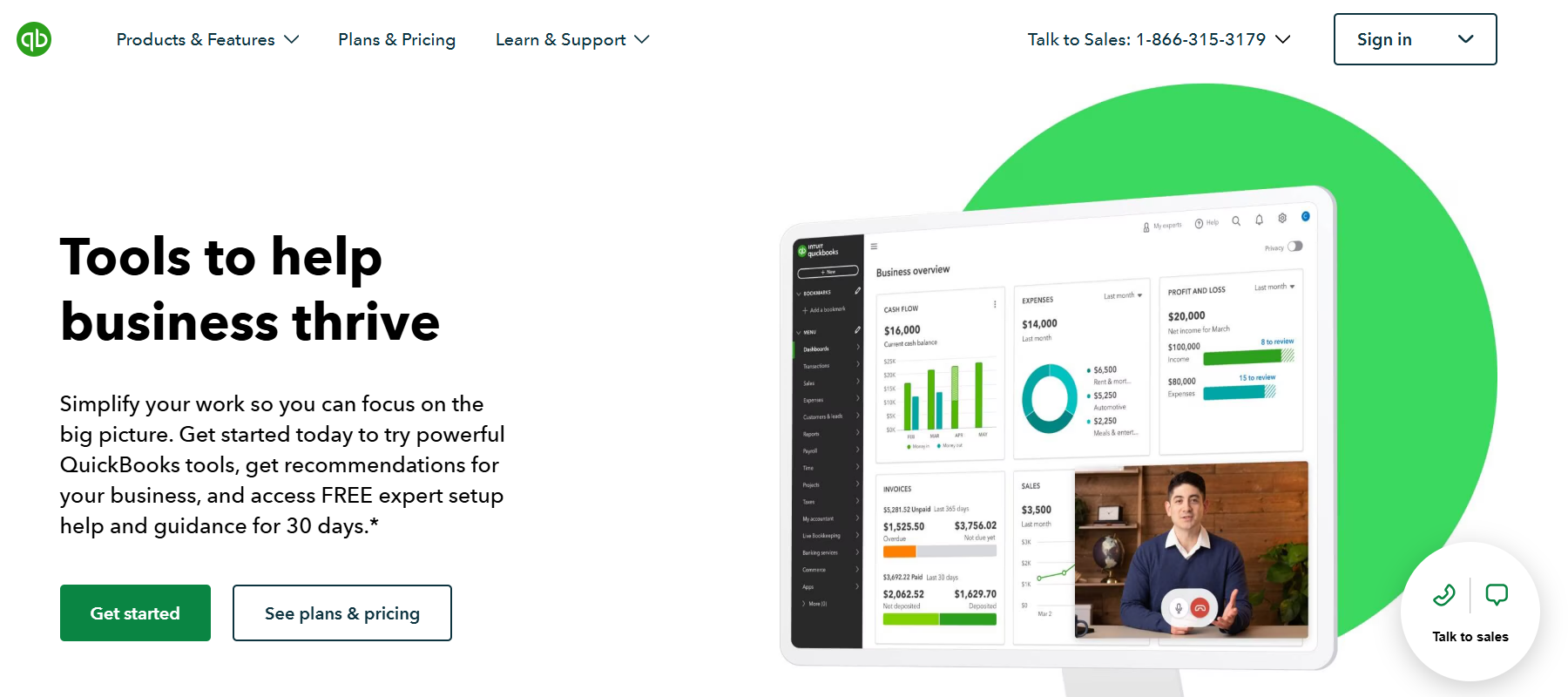
This tool works well for small furniture businesses. It syncs with online stores so you can sell in multiple places. You can use it to keep track of what’s in stock and what needs to be reordered.
QuickBooks Commerce is good for retailers, wholesalers, and manufacturers in the furniture industry. It’s best for small to medium-sized companies that want to grow their business.
| Pros | Cons |
| Real-time inventory tracking | May have extra fees |
| Low stock alerts | Might be too complex for very small businesses |
| Syncs with online sales | Learning curve for new users |
6. TradeGecko
TradeGecko is a software tool that helps you manage your furniture inventory. It’s designed for small and medium-sized retailers and wholesalers who sell furniture online or in stores.
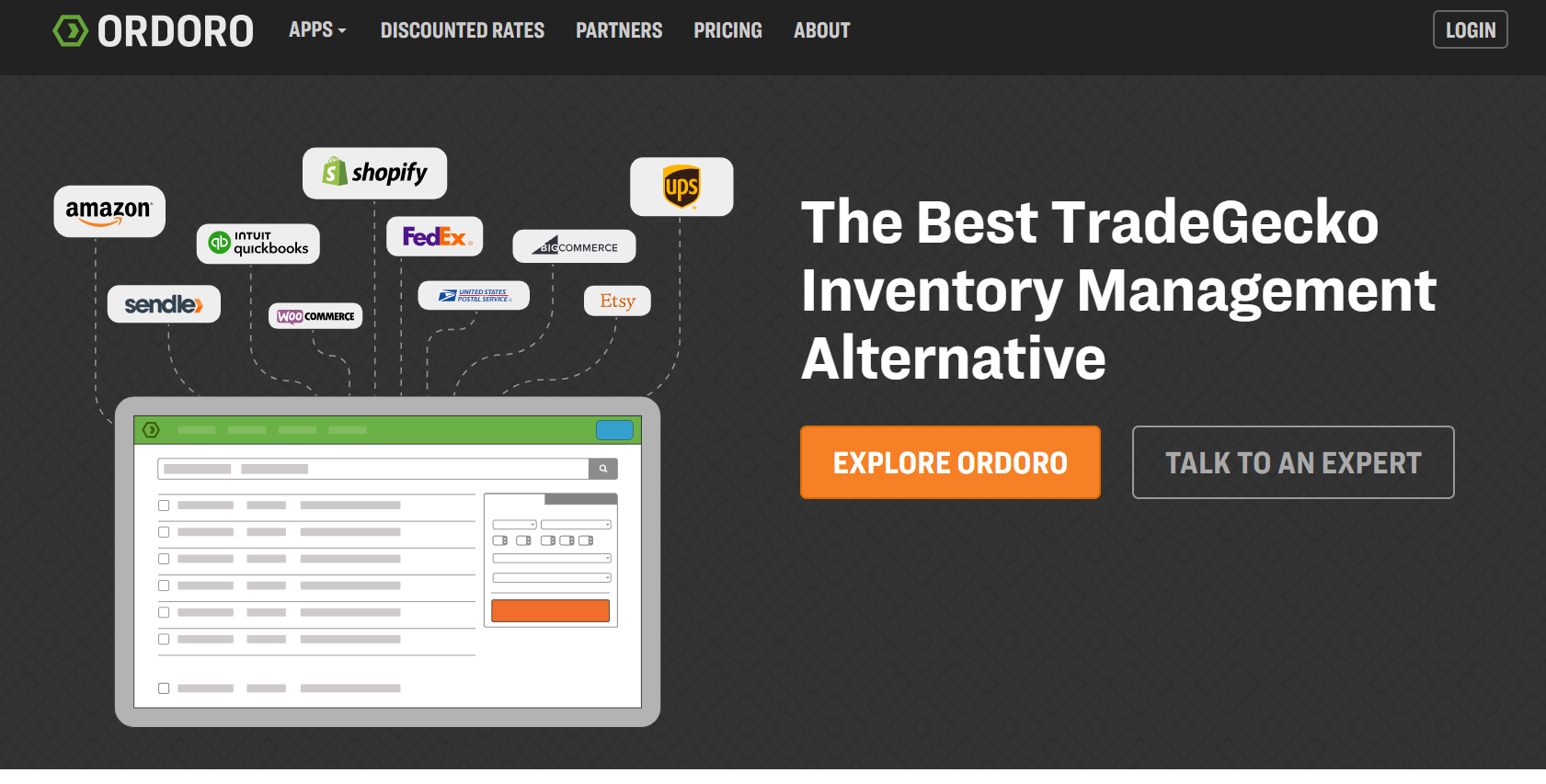
TradeGecko lets you track your furniture stock across different locations. You can see which items are selling well and which ones need restocking. This helps you make smart decisions about what to order.
The software also handles sales orders and purchasing. You can create invoices, manage payments, and keep track of your suppliers all in one place.
TradeGecko offers reports on your inventory data. These reports show you trends in your furniture sales and help you plan for future demand.
| Pros | Cons |
| Easy to use for small businesses | May be too simple for large companies |
| Handles multiple currencies | Some features cost extra |
| Integrates with other business tools | Learning curve for new users |
7. ERPNext
ERPNext is a free and open-source inventory management software for furniture manufacturers. It helps you keep track of your stock across different warehouses and manage production processes.
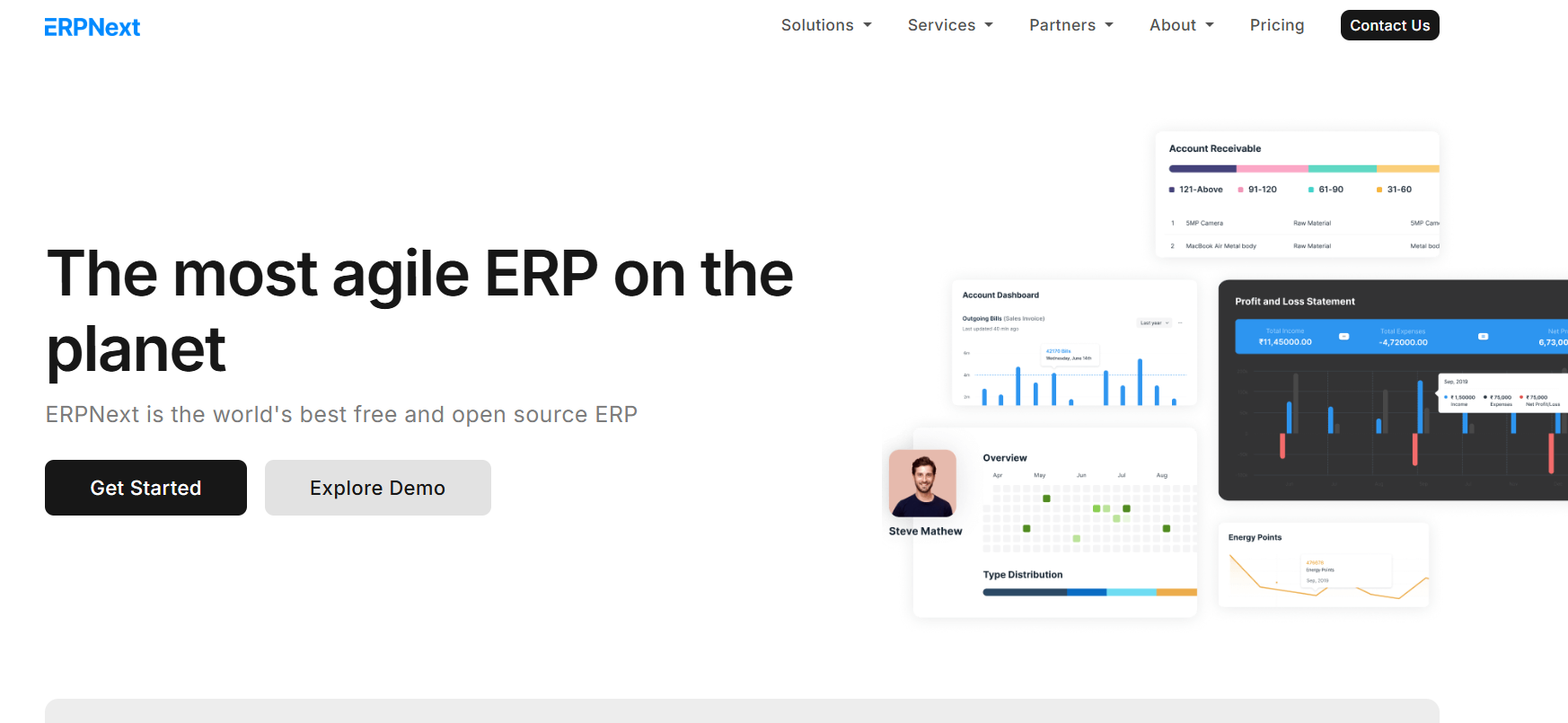
ERPNext offers features tailored for furniture businesses. You can monitor raw materials, track work-in-progress items, and manage finished products. The software also helps with batch tracking and serial number management.
This tool is useful for small to medium-sized furniture companies. It can handle various aspects of your business, from sales and customer management to inventory control.
ERPNext works well for different types of furniture businesses. Whether you make custom pieces or mass-produce items, it can adapt to your needs.
| Pros | Cons |
| Free and open-source | May require technical skills to set up |
| Specific features for furniture industry | Learning curve for new users |
| Handles various business aspects | Limited advanced features compared to paid options |
8. Unleashed Software
Unleashed is a popular furniture inventory management software. It helps you keep track of your stock and manage costs. You can use it for both retail and wholesale furniture businesses.
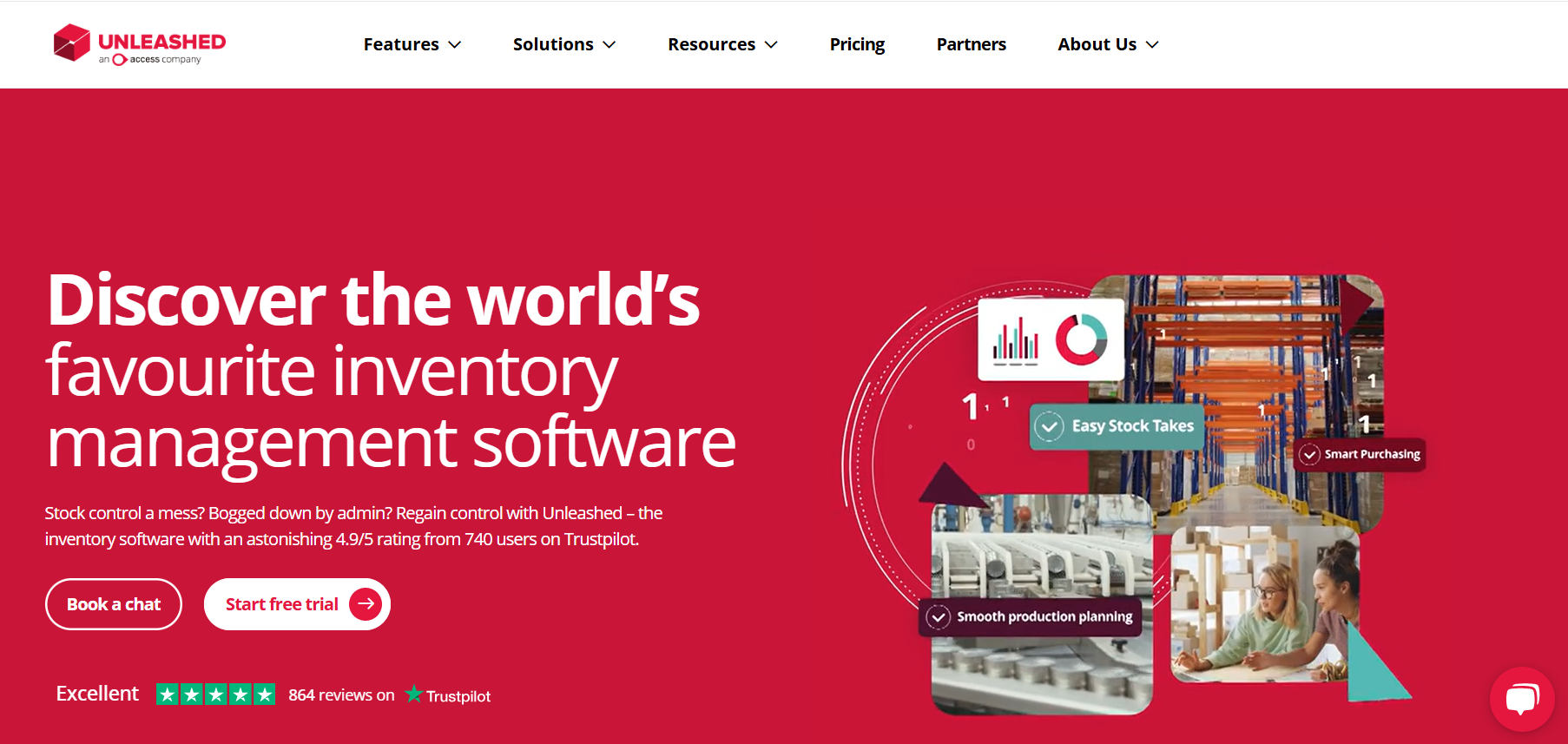
With Unleashed, you can see all your furniture items in one place. This makes it easy to know what you have and what you need to order. The software also helps you figure out how much your stock is worth.
Unleashed works well for small and medium-sized furniture companies. It’s good for stores, warehouses, and manufacturers. Many types of furniture businesses use it, from custom builders to large retailers.
This tool is best for growing businesses that need better inventory control. It’s cheaper than some other options, costing about $88 per month for each user.
| Pros | Cons |
| Easy to use | Might be too much for very small shops |
| Helps track stock value | Needs internet to work |
| Works for retail and wholesale | Can take time to set up |
9. Cin7
Cin7 is a cloud-based inventory management software that helps you track your furniture stock across multiple channels. It offers real-time visibility into your inventory levels, letting you know when it’s time to reorder.
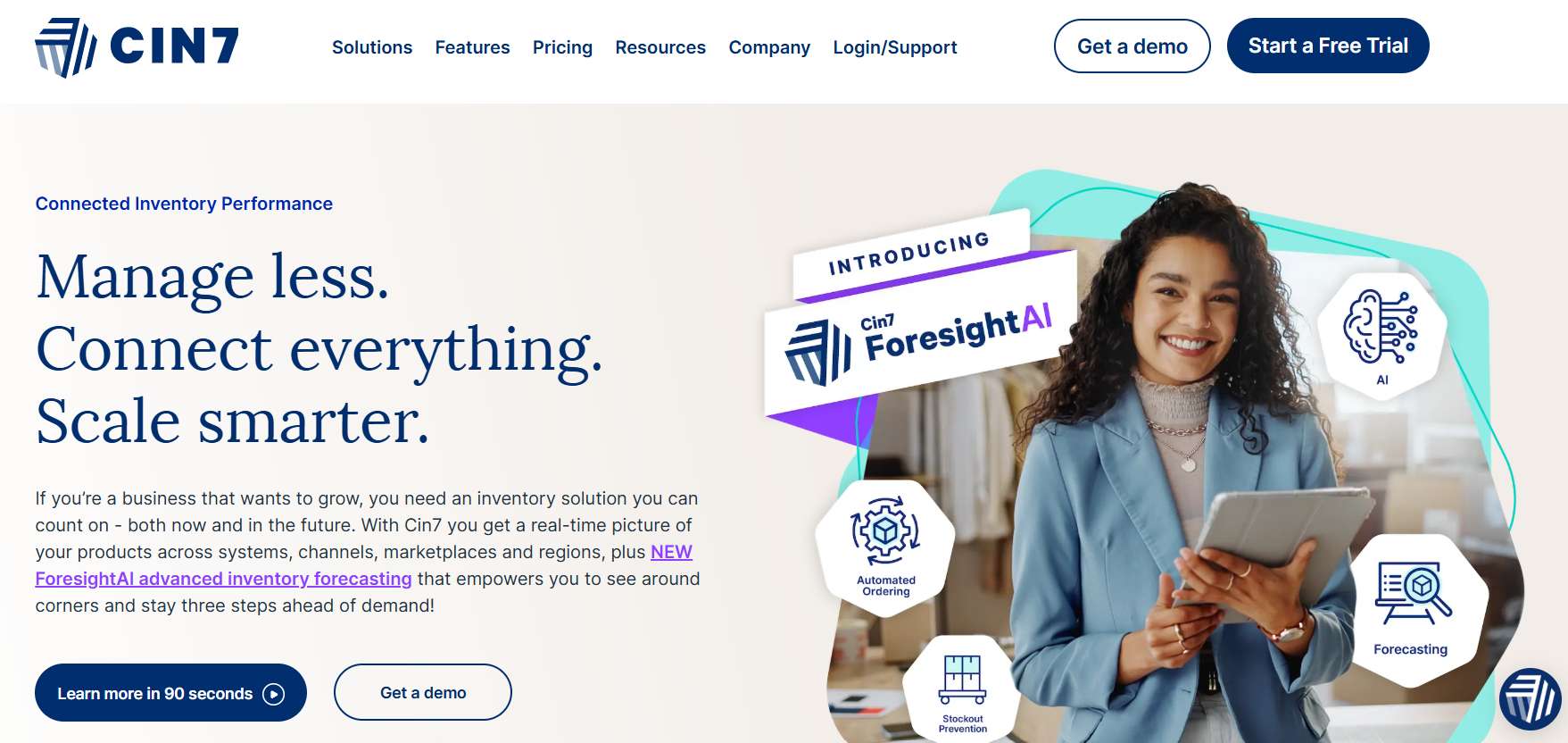
You can use Cin7 to manage orders, automate manufacturing processes, and handle retail and wholesale operations. The software integrates with many popular ecommerce platforms and accounting systems.
Cin7 is designed for small to medium-sized businesses selling physical products. It’s especially useful for furniture retailers and manufacturers who need to keep track of complex inventory across different locations.
| Pros | Cons |
| Cloud-based for easy access | May be complex for very small businesses |
| Real-time inventory updates | Pricing can be high for some users |
| Integrates with many systems | Learning curve for new users |

Create your online store in minutes!
Looking to sell online? Develop and launch your store with 10Web AI Ecommerce Website Builder.
Cost of furniture inventory management software
The cost of furniture inventory management software can vary widely depending on the complexity and scale of your business. Basic systems typically start at $50 to $100 per month for small businesses, while more feature-rich options for mid-sized or large companies can range from $500 to $2,000 per month. These systems often include core functionalities like inventory tracking and basic reporting, but you may need to upgrade to access advanced features like multi-warehouse management or custom reporting.
Additional fees and charges
In addition to the monthly subscription fees, many software providers charge for additional features or services. For example, you may incur extra costs for integrations with other business tools such as point-of-sale systems, ecommerce platforms, or accounting software. Some platforms also offer one-time setup fees, which can range from a few hundred to several thousand dollars, depending on the complexity of the integration or custom configuration required.
Training and support costs
Another potential expense is training. Many inventory management systems require staff training to use effectively, especially for more complex software. Training costs can either be a one-time expense or ongoing, depending on the provider. Some software companies offer training as part of their package, while others may charge separately. Additionally, if you need ongoing support or advanced troubleshooting, some providers charge annual maintenance fees or hourly consulting fees. These hidden costs should be considered when budgeting for software.
User and location fees
Lastly, be aware that some systems may have limitations based on the number of users or locations. For instance, basic pricing may cover one location and a set number of users, with additional fees for adding more users, locations, or warehouses. It’s important to evaluate these factors to ensure the software will scale with your business growth. By understanding all potential costs, you can make a more informed decision when selecting the right furniture inventory management solution.
Conclusion
Furniture inventory management software is essential for retailers and manufacturers in the furniture industry looking to streamline operations, improve accuracy, and enhance customer satisfaction. With features like real-time inventory tracking, integration capabilities, and automated ordering, these tools help businesses maintain optimal stock levels, reduce errors, and deliver better service.
By choosing the right software, furniture businesses can effectively manage their inventory, boost efficiency, and stay competitive in the ever-evolving market. Whether you’re a small retailer or a larger enterprise, investing in the right inventory management solution is a key step toward long-term success.









